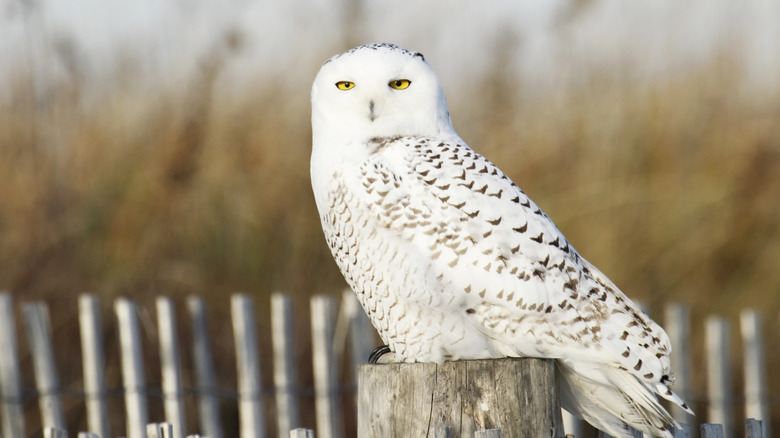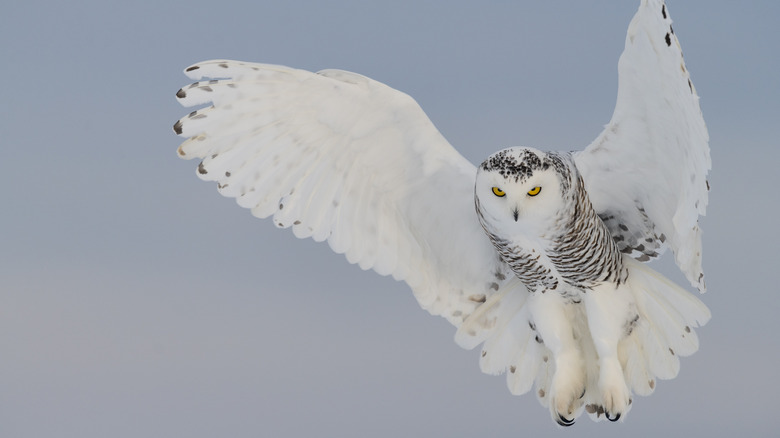The Heartwarming Wildlife Story Unfolding At One Of New England's Busiest Airports
When you think about the best birdwatching destinations the U.S. has to offer, places like Florida, with its flamingoes and pelicans, come to mind. Probably, you don't think of ... airports. Airports and birds generally only mix to disastrous results, so much so that laws have been passed to prevent these incidents. However, some airports just happen to be located in ideal bird habitats. One of these, Boston Logan International Airport (BOS), New England's largest (and busiest) airport, is home to the largest concentration of migratory snowy owls in the Northeast.
While it's unknown exactly why the snowy owls, or "snowies," come to Boston Logan, scientists theorize that the empty meadows and water that encircle the airport, full of small creatures for the snowies to catch, are similar to their tundra home in the north. Every year, between late fall (usually November, although the earliest recorded owl sighting occurred in October) through April, snowies migrate over 3,000 miles down from the Arctic to Boston. The 1,800 acres of open space around the airport, surrounded by water on three sides, attracts hundreds of these owls each year, who then return to the north in spring.
Although the owls don't seem to be bothered by the noisy airport, as with any intersection of man and nature, it's not without strife. The snowies do eat smaller birds that often get caught in airplanes, but unfortunately, they can themselves also get into danger, or pose a threat to the planes. The Federal Aviation Administration (FAA) mandates bird patrols at airports, thanks to deadly disasters involving birds, but historically, this meant shooting the birds. However, one scientist, hoping to prevent the excess killing of vulnerable snowies, wrote a letter to Boston Logan in 1981 with a different solution. And so the Snowy Owl Project was born.
The Snowy Owl Project: Saving the snowy owls that migrate at Boston Logan Airport
Boston Logan International is known as one of the busiest airports in North America, and for its amenities like this airport lounge with mouth-watering lobster rolls and craft cocktails. But it's also gaining fame thanks to the Snowy Owl Project, the life's work of scientist Norman Smith, on behalf of the Massachusetts Audubon Society (Mass Audubon). Since 1981, Smith has captured over 900 owls and transported them to safety, usually to places like the North Shore or Cape Cod, known for its wild beaches and spectacular sunsets. He's also been able to humanely study the owls, using small transmitters on healthy snowies to track things like migration patterns and routes, along with eating habits and lifespan.
Smith, who enlists the help of his family and friends for the Snowy Owl Project, has also rescued several owls too injured to be released back into the wild and uses them for educational purposes. He's also leveraged the success of his program to inspire other airports all over North America to follow a similar protocol, to humanely trap and release the birds elsewhere rather than simply shooting or killing them. Smith, indeed, inspires us all, encouraging humanity to live peacefully alongside wildlife and nature, and reminding us it's possible, and definitely preferable.

